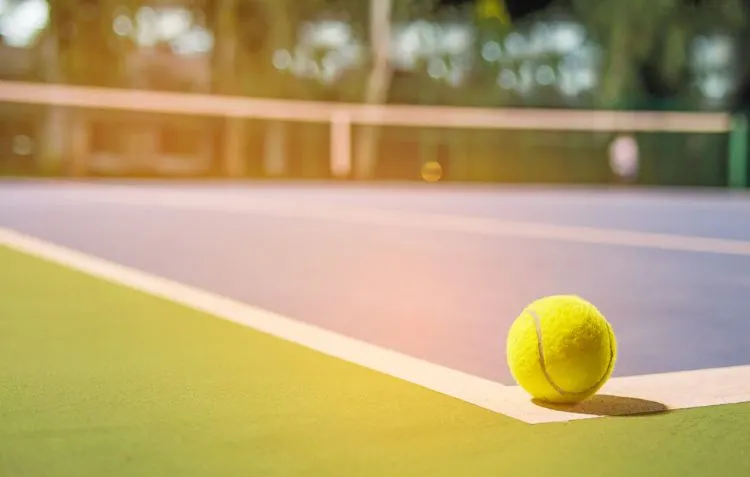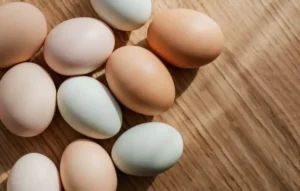A tennis match can last anywhere from a quick 40-minute game to an intense multi-hour battle, with some historic matches stretching beyond five hours. Whether you’re a casual fan or an aspiring player, understanding how long is a tennis game lasts is essential for setting expectations and preparing for the sport’s demands.
Match duration is influenced by several key factors, including the format of the competition, player styles, and external conditions like weather and court surfaces. A fast-paced match on a grass court can end swiftly, while a grueling clay-court battle may extend for hours. Grand Slam events, which follow a best-of-five format for men, often result in longer matches compared to standard ATP and WTA tournaments.
By the end of this guide, you’ll understand the factors affecting tennis match length, notable long matches in history, and recent rule changes designed to regulate game duration.
Table of Contents
ToggleUnderstanding Tennis Match Structures
Tennis match duration varies significantly based on the format and structure of the game. From quick best-of-three matches to marathon best-of-five battles, the rules governing match play play a crucial role in determining how long a game lasts.
Tournament rules, scoring systems, and tiebreak policies all influence match length. For instance, Grand Slam tournaments feature longer formats than regular ATP and WTA events, while rule modifications—such as time constraints between points—are designed to streamline play.
Match Formats and Their Impact on Duration
Best-of-Three vs. Best-of-Five Sets
Men’s singles matches in Grand Slam tournaments are played in a best-of-five format, meaning a player must win three sets to claim victory. This significantly extends match duration, with an average Grand Slam men’s match lasting between 2.5 to 5 hours. In contrast, women’s singles matches and most ATP and WTA Tour events follow a best-of-three format, reducing match length to 1 to 2 hours.
Tiebreaks and Deciding Sets
Tiebreak rules can drastically alter match duration. In the past, Grand Slam tournaments allowed final sets to continue indefinitely until one player won by two games. However, recent rule changes introduced final-set tiebreaks, capping set lengths and preventing excessively long matches. For instance, Wimbledon’s 2010 match between John Isner and Nicolas Mahut, which lasted 11 hours and 5 minutes, led to the adoption of tiebreak rules for final sets.
Average Match Durations by Tournament Level
Grand Slam Tournaments
Grand Slam matches have the longest durations due to their best-of-five format in men’s singles. While some matches conclude within 1.5 to 3 hours, others stretch beyond 5 hours, particularly in high-intensity battles. For example, the 2012 Australian Open final between Novak Djokovic and Rafael Nadal lasted 5 hours and 53 minutes, the longest Grand Slam final in history.
ATP and WTA Tours
ATP and WTA Tour matches typically follow a best-of-three structure, resulting in shorter durations. On average:
- ATP matches last between 1.5 to 2 hours, depending on playing style and court surface.
- WTA matches are usually 1 to 1.5 hours long.
- Fast-paced indoor hard courts and grass courts often lead to shorter matches, while slow clay courts extend rallies and increase match length.
Factors Influencing Match Length
Tennis match durations vary widely due to multiple influencing factors. While some matches conclude swiftly in under an hour, others stretch into multi-hour battles, largely dictated by player strategies, match pace, and external conditions.
Several elements impact match length, from player endurance to environmental conditions. Below, we explore key factors shaping the duration of professional tennis matches.
Player Styles and Strategies
Baseline Players vs. Serve-and-Volley Players
Playing style is a major determinant of match length. Baseline players, such as Rafael Nadal and Daniil Medvedev, engage in extended rallies, focusing on consistency and defensive play. This results in longer exchanges and overall match durations. Clay courts, which favor baseline play, further extend rally lengths due to slower ball speed.
In contrast, serve-and-volley players, like Roger Federer in his early career and John McEnroe, aim to shorten points by rushing the net after a strong serve. This aggressive approach reduces rally length, leading to shorter matches, particularly on fast courts like grass.
Physical Conditioning and Endurance
Players with superior fitness levels can sustain high-intensity rallies over extended periods. Athletes like Novak Djokovic and Carlos Alcaraz rely on endurance, enabling them to maintain peak performance deep into lengthy five-set encounters. In contrast, players with lower stamina may struggle, leading to shorter matches due to unforced errors and fatigue-induced drop-offs in performance.
Match Pace and Time Between Points
Serve Rituals and Preparation
The time a player takes before serving significantly influences match duration. Players with elaborate pre-serve rituals, like Rafael Nadal’s meticulous ball bouncing routine, can extend match length. Conversely, quicker servers, such as Nick Kyrgios, reduce downtime, contributing to shorter matches.
Enforcement of Shot Clocks
To prevent excessive delays, the ATP and WTA introduced a 25-second shot clock between points. This rule enforces a faster pace of play, reducing unnecessary time wastage. Studies have shown that the implementation of shot clocks has cut average match times by 4-7 minutes, particularly affecting slower-paced players.
External Conditions

Weather Factors
Extreme weather conditions, such as heat, wind, and rain delays, can prolong matches.
- Heat: In high temperatures, players require longer recovery times between points and sets, leading to extended match durations.
- Rain Delays: Matches on outdoor courts, such as Wimbledon and Roland Garros, often experience interruptions due to rain, adding hours or even days to total match time.
Court Surface
Different court surfaces significantly affect match length:
- Clay courts (Roland Garros): Slow down the ball, extending rallies and making matches last longer.
- Hard courts (US Open, Australian Open): Provide a balanced pace, leading to medium-length matches.
- Grass courts (Wimbledon): Facilitate fast points due to low bounce and quick conditions, typically resulting in shorter matches.
Notable Marathon Matches
While most professional matches last between 1.5 to 3 hours, some have entered the record books due to their extraordinary duration. These historic battles showcase the extremes of endurance, mental toughness, and the unpredictability of tennis.
Historic Long Matches
Wimbledon 2010 – Isner vs. Mahut
The longest tennis match in history took place at Wimbledon 2010 between John Isner and Nicolas Mahut. Spanning 11 hours and 5 minutes over three days, the match featured an astonishing final set score of 70-68 before Isner eventually secured victory. Due to the excessive duration, Wimbledon later introduced a final-set tiebreak rule to prevent similar marathon matches.
Australian Open 2012 – Djokovic vs. Nadal
The 2012 Australian Open final between Novak Djokovic and Rafael Nadal remains the longest Grand Slam final ever, lasting 5 hours and 53 minutes. The match was a test of both physical endurance and mental resilience, with Djokovic ultimately prevailing in a dramatic five-set showdown. This epic contest highlighted the importance of fitness, strategy, and match conditions in determining game length.
Recent Examples
United Cup 2024 – Haddad Maia vs. Gao Xinyu
One of the most recent marathon matches occurred during the United Cup 2024, where Beatriz Haddad Maia and Gao Xinyu battled for 3 hours and 22 minutes. This match, the longest women’s match in United Cup history, exemplified how player endurance, match intensity, and external conditions can contribute to extended play. (Source: TheSun.co.uk)
Marathon matches continue to capture the essence of tennis—a sport of endurance, strategy, and perseverance.
Innovations and Rule Changes Affecting Match Duration
As tennis evolves, various rule changes have been introduced to maintain a balance between player endurance and audience engagement. Innovations like shot clocks, modified warm-ups, and tactical timeouts aim to reduce unnecessary delays and standardize match durations.
Introduction of Shot Clocks
Purpose and Implementation
Introduced in 2018, the 25-second shot clock was designed to regulate the time players take between points. Before its implementation, players often exceeded this limit, leading to prolonged match durations. The clock ensures a consistent pace of play, enhancing viewer experience and fairness.
Impact on Match Length
A study conducted by the ATP Tour found that average match times were reduced by approximately 4-7 minutes after the shot clock’s introduction. This change has particularly affected players with slower playstyles, forcing them to adapt to a quicker rhythm.
Modified Warm-Up Procedures
United Cup Initiatives
To minimize downtime, initiatives like the United Cup’s proposed removal of post-introduction warm-ups aim to maintain match momentum. By eliminating extended pre-match rituals, organizers estimate a time reduction of up to 5 minutes per match, helping maintain a structured schedule.
Tactical Timeouts
Mixed Doubles Innovations
In mixed doubles, new 60-second tactical timeouts have been introduced, allowing teams to discuss strategies without significantly extending match duration. According to Reuters, initial trials have shown that while strategic discussions improve team performance, they do not contribute to excessive match length, making them a viable addition.
Conclusion
Tennis match durations are influenced by a variety of factors, including match formats, player strategies, court surfaces, and rule changes. While Grand Slam events can extend beyond five hours, ATP and WTA matches typically last 1 to 2 hours, making tennis an unpredictable yet exciting sport.
Recent innovations, such as shot clocks, modified warm-ups, and tactical timeouts, aim to standardize match lengths while maintaining the integrity of competition. As tennis continues to evolve, these changes help create a fairer and more engaging experience for both players and audiences.
For aspiring players, understanding these factors is crucial in developing stamina, refining strategies, and preparing for different match conditions. Whether you’re a casual viewer or a competitive athlete, recognizing what influences match duration will enhance your appreciation of the game and improve your tennis experience.
If you enjoyed learning about How Long Is a Tennis Game, explore more insightful articles on sports, lifestyle, fashion, and culture at The Fast Upload. Stay informed with engaging and well-researched content!
FAQs
How long does a typical tennis match last?
A standard best-of-three sets match usually lasts about 1.5 hours, while best-of-five sets matches average around 2 hours and 45 minutes.
What factors influence the length of a tennis match?
Match duration can be affected by factors such as the match format (best-of-three or best-of-five sets), player styles (e.g., baseline rallies vs. serve-and-volley tactics), court surface (clay courts often lead to longer matches), and external conditions like weather.
How does the court surface impact match duration?
Clay courts tend to slow down the ball, resulting in longer rallies and extended match times, whereas grass courts promote faster play, often leading to shorter matches.
What was the longest professional tennis match ever recorded?
The longest professional tennis match occurred at Wimbledon in 2010 between John Isner and Nicolas Mahut, lasting 11 hours and 5 minutes over three days.
Are tennis matches getting longer over the years?
Yes, matches have generally become longer compared to the 1990s, primarily due to more extended rallies and changes in playing styles.













